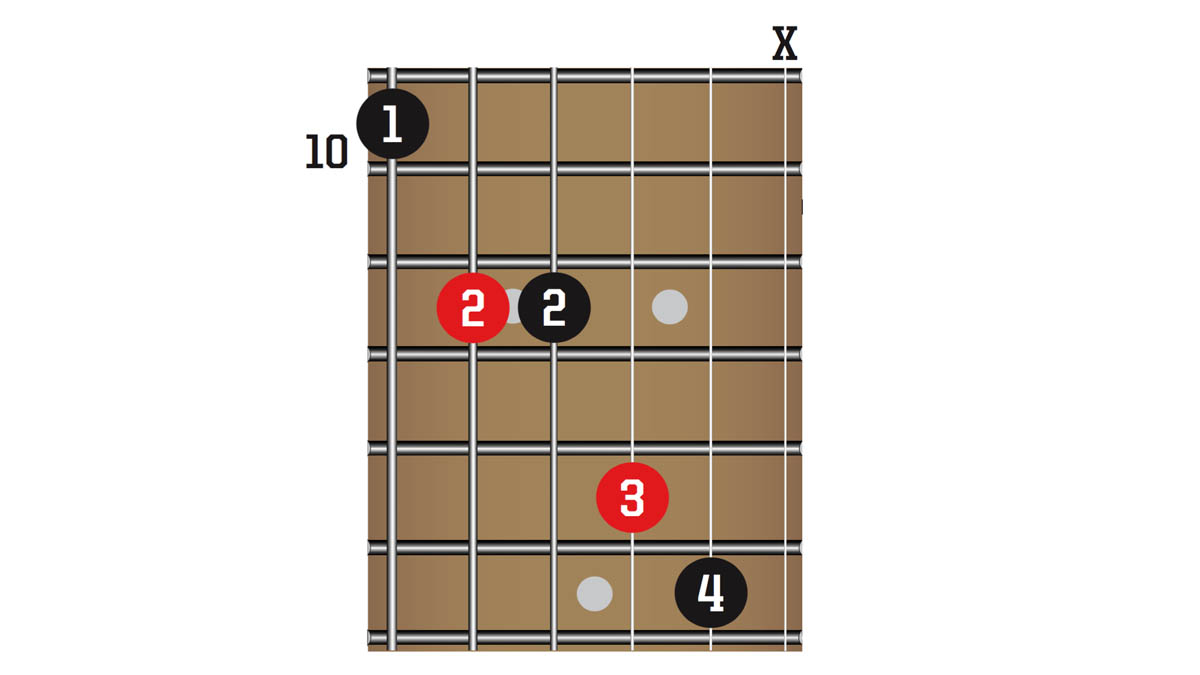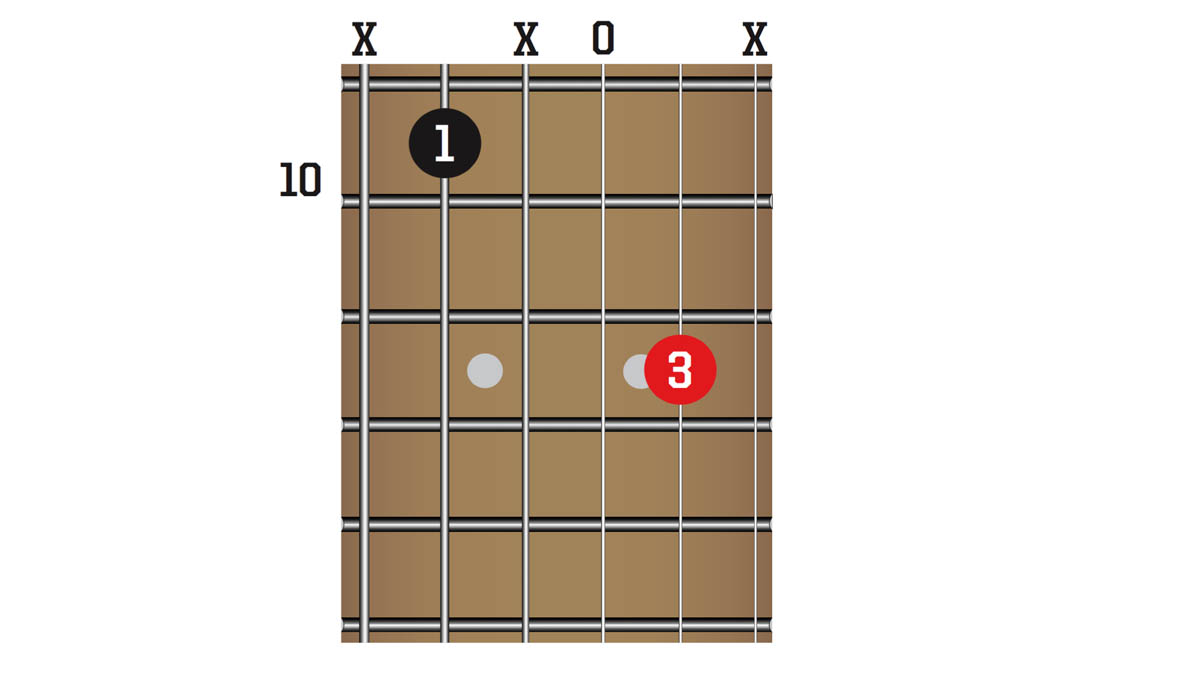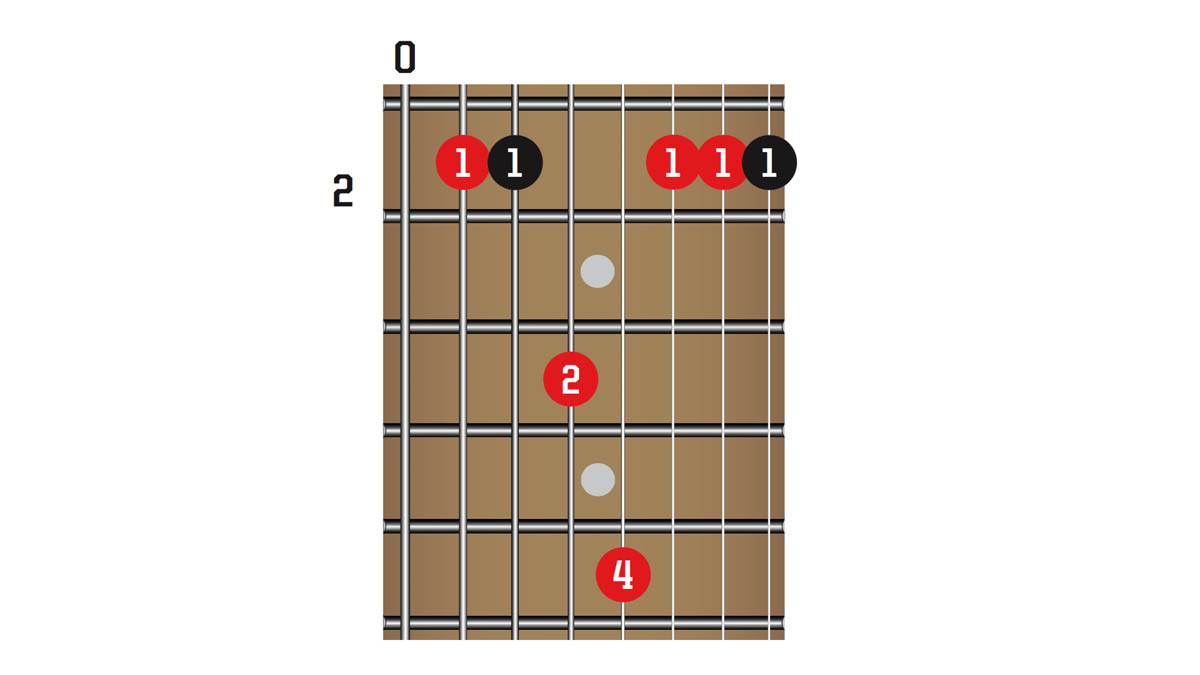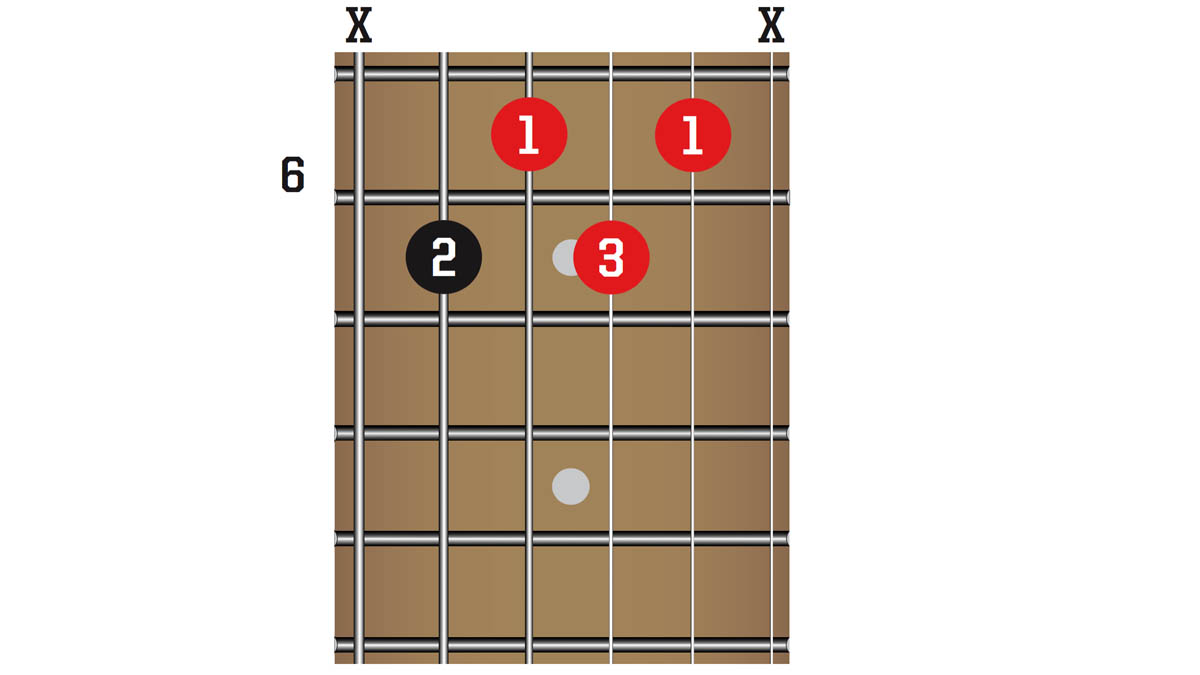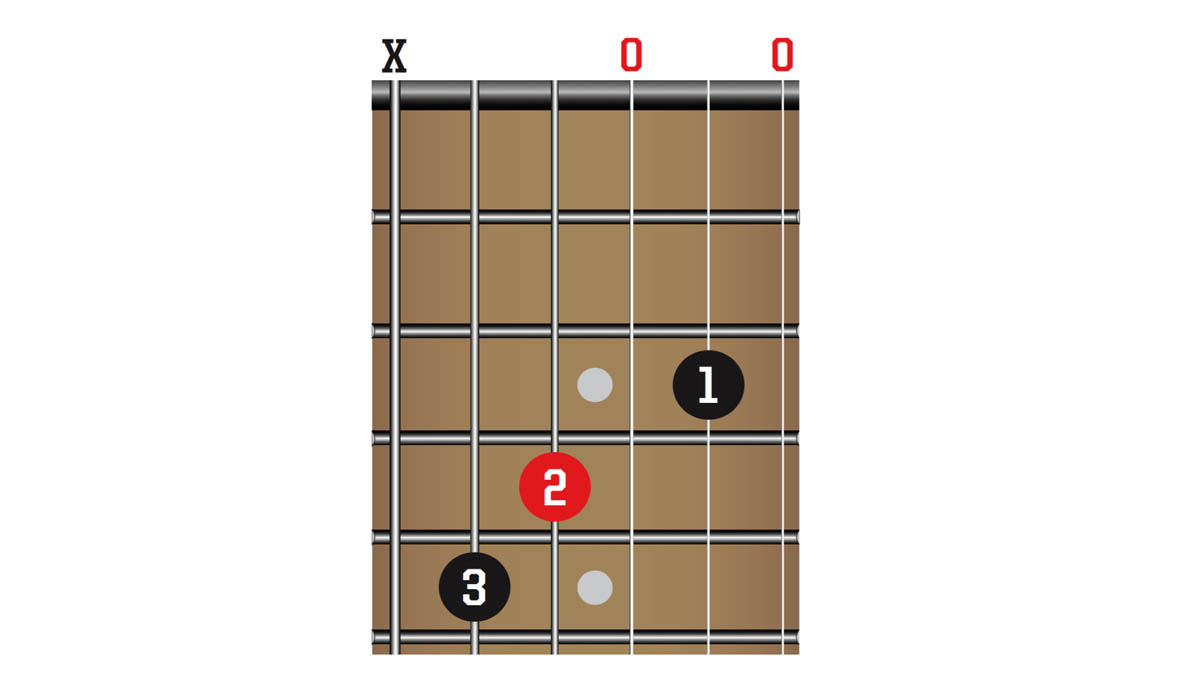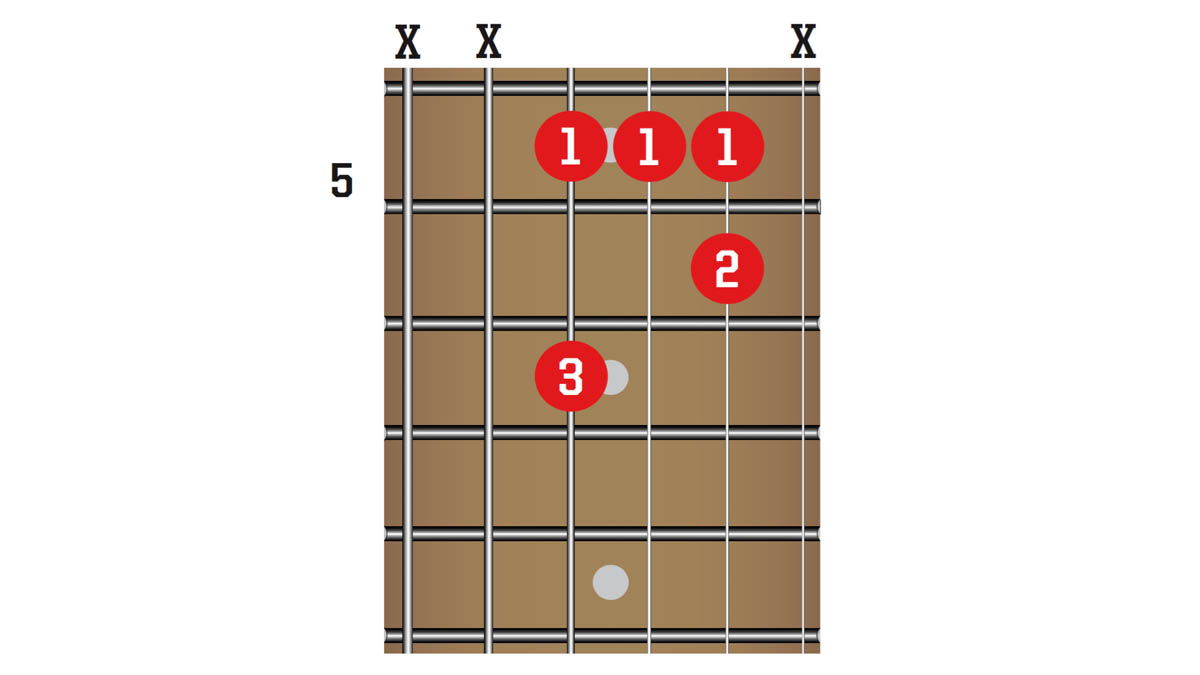50 guitar chords you need to know
Boost your guitar vocabulary with fingerstyle-friendly shapes and everyday essentials, plus complex jazz voicings

If you could choose a guitar playing superpower what would you choose? Pooling the guitar world, there would be some very different answers. Some players will want to master crosspicking inside and out. Others have ambitions of sweeping and tapping their way to the top of Shred Mountain.
But what if your superpower was to know and instantly recall every chord shape and voicing? Now, that would be something.
Spoiler: we can't get you that. Not yet, anyway, but here, Total Guitar has compiled a comprehensive list (50 all in), of the chords that every guitarist should know.
It doesn't matter if you play acoustic guitar or electric, because these can work in all kinds of contexts, and consigning them to memory may well unlock new possibilities in your songwriting (there are even a couple of voicings for seven-string and eight-string guitars in here, too).
So dig out the guitar and let's get to work. We'll start out with the basics…
1-10
1. F (Basic Barre Chord)

Barre chords are tough to play at first. Many players find it takes a few weeks to develop the strength to press down on the strings and play cleanly. Still, this ‘E-shape’ F barre chord is an essential voicing, so start your journey here and make sure to try playing the shape in other fretboard positions too.

2. C (Fingerstyle Friendly)
You surely know the open C chord, right? Well, with the simple addition of a high G note you’ll transform the basic C into a staple fingerstyle shape. From Ralph McTell to John Smith, it’s a shape employed by almost every fingerpicker around.
All the latest guitar news, interviews, lessons, reviews, deals and more, direct to your inbox!

3. C/G
With a fingerstyle friendly C shape under your belt you’ll ‘get’ the reasoning behind this chord. A simple move of your third finger opens up the opportunity to play alternating basslines – just swap between the two 3rd fret notes on the low strings. Johnny Cash strums out a cool bassline in The Man Comes Around.
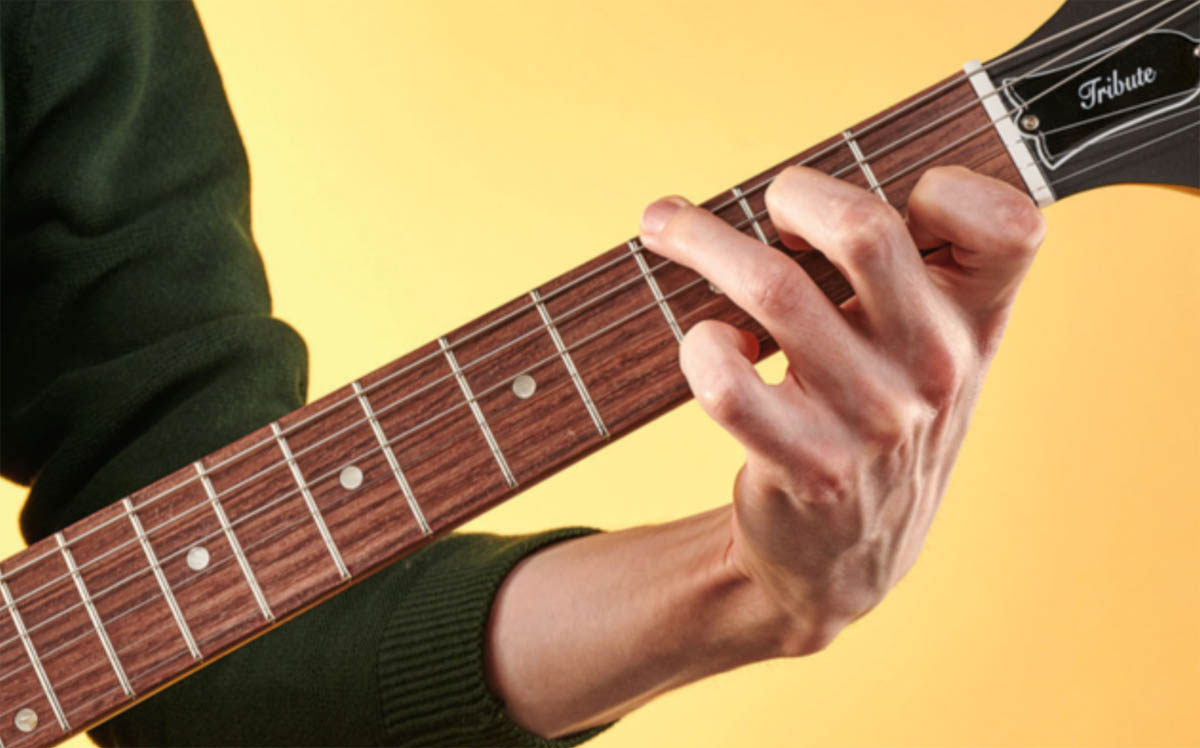
4. F5 (aka the powerchord)
Possibly the most commonly used chord in all of rock guitar, the 5 chord is generally known as a ‘powerchord’ thanks to its chunky, solid sound. Crank up the gain on your amp and power away to your heart’s content. Just remember to keep the top strings (marked X) muted.

5. F5 (Drop D powerchord)
Lower your sixth string down a tone (two frets) to produce the drop D tuning. And what a tuning it is! This easy, hard rocking powerchord shape can be played with just one finger and easily moved around the fretboard. Soundgarden’s Outshined is a classic example.
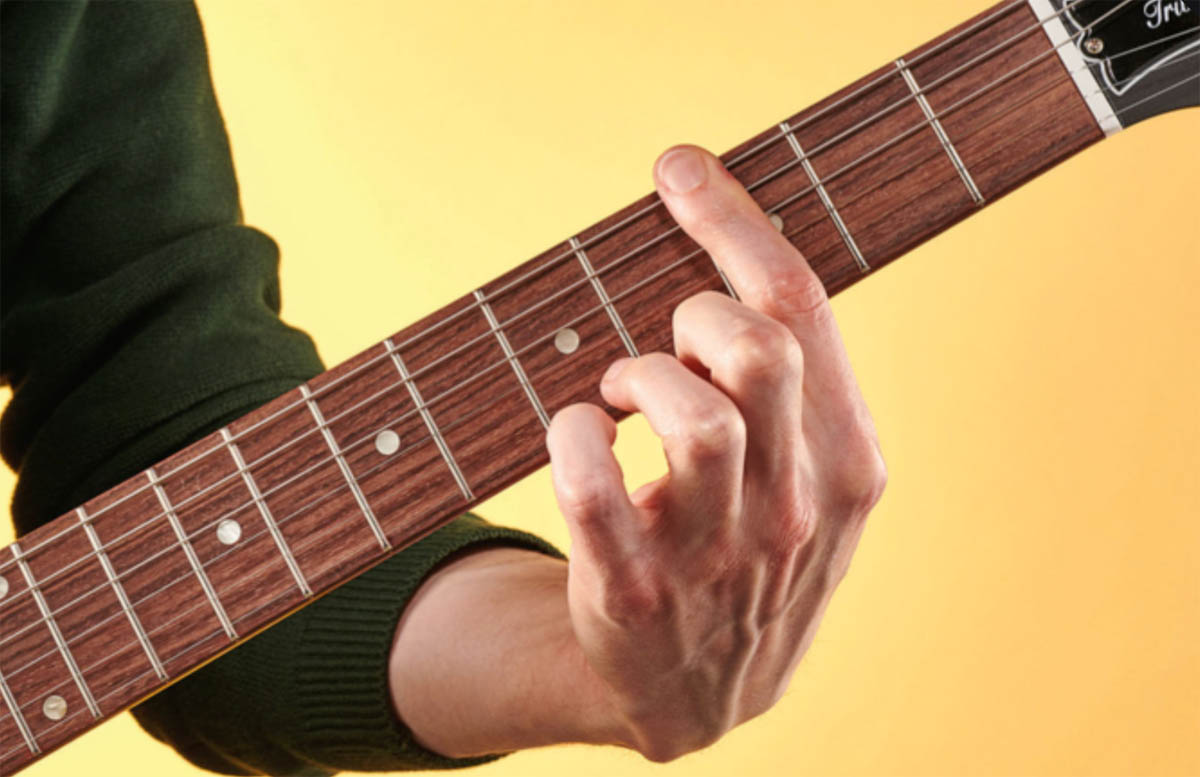
6. Csus2 (in Drop D)
Sus what? Well, it’s short for suspended but don’t worry too much about that. Dial in a distorted tone and this chord can sound epic in a post-grunge Foo Fighters meets Alter Bridge way. It’s a contemporary sounding variation on the basic powerchord.

7. D5 (extended)
This extended version of the basic powerchord covers a full two octaves on the fretboard. What’s the big deal about that? You’ll get a bigger, fatter sound and, let’s face it, that’s often the point with powerchords.

8. E5/B
Another powerchord now as we look at the mother of them all. This voicing is played across all six guitar strings giving you the biggest, fattest sound possible from the humble 5 chord. It’s played as an inversion, which just means the root note isn’t the lowest note you’ll play.

9. A5/E
Power McPowerchordface? Yes, the well of powerchord puns has run dry here at TG Towers, but you should still take a look at one last 5 chord, this time covering five strings. Remember, with all of these extended powerchords, you can just play two or three adjacent strings; mapping them out in full just gives you more options to explore.

10. Bm7
We love this chord. Admittedly it can be tough to manage the third finger barre but it’s no harder to play than, say, a conventional E-shape barre chord. In fact, this is essentially the same as said barre chord, just without the first or fifth strings. Try it in jazz or light blues progressions.

11-20
11. Bm6
This minor 6th shape is great for an instant Django Reinhardt or Biréli Lagrène-style gypsy jazz sound. Alternate between a bass note and the upper notes of the chord with your pick for an authentic ‘la pompe’ groove.
12. B13
Ideal for jazz-blues, gypsy jazz or even funk, this 13th chord is a bit of a finger twister but it sure is versatile. Still struggling to play it? Try leaving out the first string. No one will notice!
13. F#m7
The opening seconds of Oasis’ biggest hit turned this otherwise basic Em7 shape into a full-on ear worm. There’s a capo on the 2nd fret, of course – so the actual pitch is F#. You can’t really play it as a standard barre chord so the capo is vital.

14. A/C#
Bob Marley’s P-90-fuelled reggae-style skank grooves boil down to some very simple chord shapes often played on only three strings. This shape is the top three strings of an ‘E-shape’ barre chord. In 5th position it’s an A chord and C# is the lowest note. Play staccato for true Marley feel.

15. G
Played famously by Paul McCartney on The Fab Four’s Blackbird, this shape can easily be moved around the fretboard. The open third string comes in and out of tune as you move the shape, creating harmony and dissonance – so it’s worth experimenting to find the sweeter-sounding positions.

16. Em
Another shape from The Beatles’ Blackbird, this time played as a minor chord. Contemporary pop rocker James Bay has also taken these shapes to heart. Hold Back The River uses both of McCartney’s chord shapes.
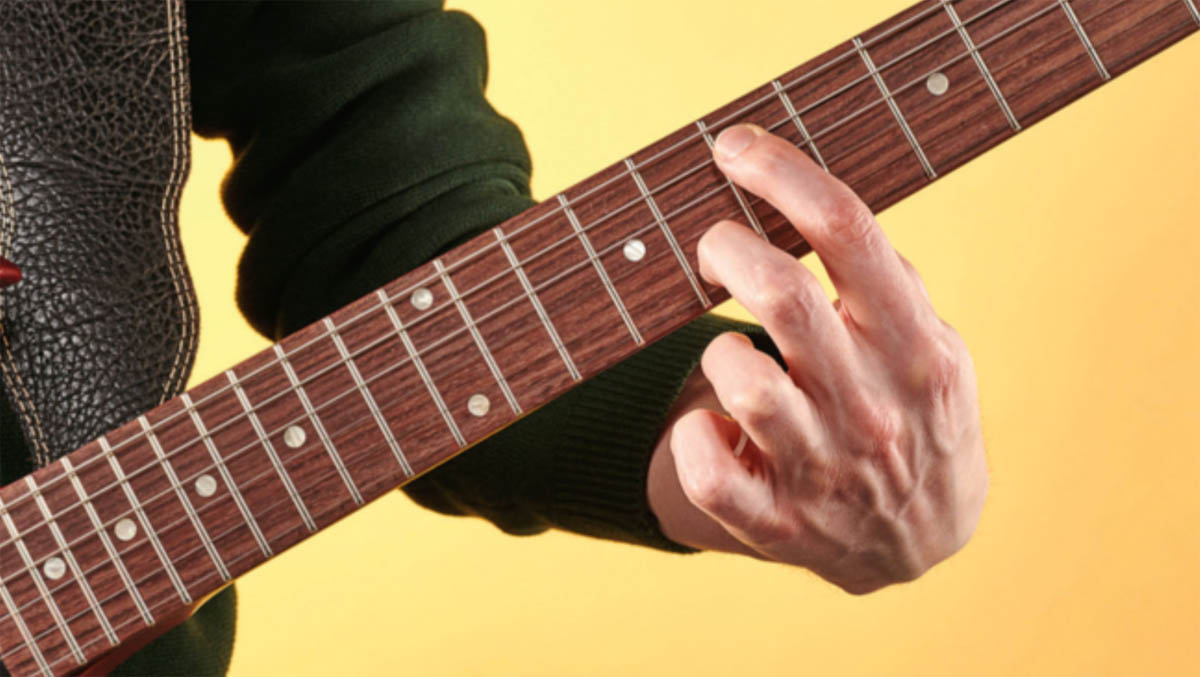
17. Badd11
Whenever we hear this chord we think of No Excuses by Alice In Chains. Just slide in from two frets below to outline the intro. This is a versatile shape that you can move all around the fretboard. Avoid the more dissonant sounding 9th and 11th positions though.

18. F#7add11
Just to hammer home the point, here’s the No Excuses chord again, but played down in 2nd position where there’s a different flavour all together thanks to the open-string intervals. You can also hear it in action as the opening chord to Hemispheres by Rush.

19. Bsus4
Pete Townshend’s strumming tour de force on The Who’s classic rock opera track Pinball Wizard kicks off with this sus chord. Hook your thumb over the back of the neck to fret the sixth string and aim to keep the fifth string muted out.

20. Cadd9
If you’re after a bright, happy folk or acoustic rock vibe then this is the chord for you. It sounds great on acoustic guitar or with a clean electric tone. Mix in open G and Dsus4 chords for a cool upbeat progression.

21-30
21. E7sus4
This might seem like an unassuming barre chord. Nothing special, surely? Well, in the hands of disco rhythm guitar great Nile Rodgers this is one of the genre’s great chords, found amidst the riff in Chic’s Good Times. For a true Nile vibe, strum only two or three strings at a time.

22. A6
Another chord from Good Times, this shape also sounds great played fingerstyle in country and rockabilly styles. The 7th fret F# note on the second string is the all-important 6th interval giving the chord its trademark sound.
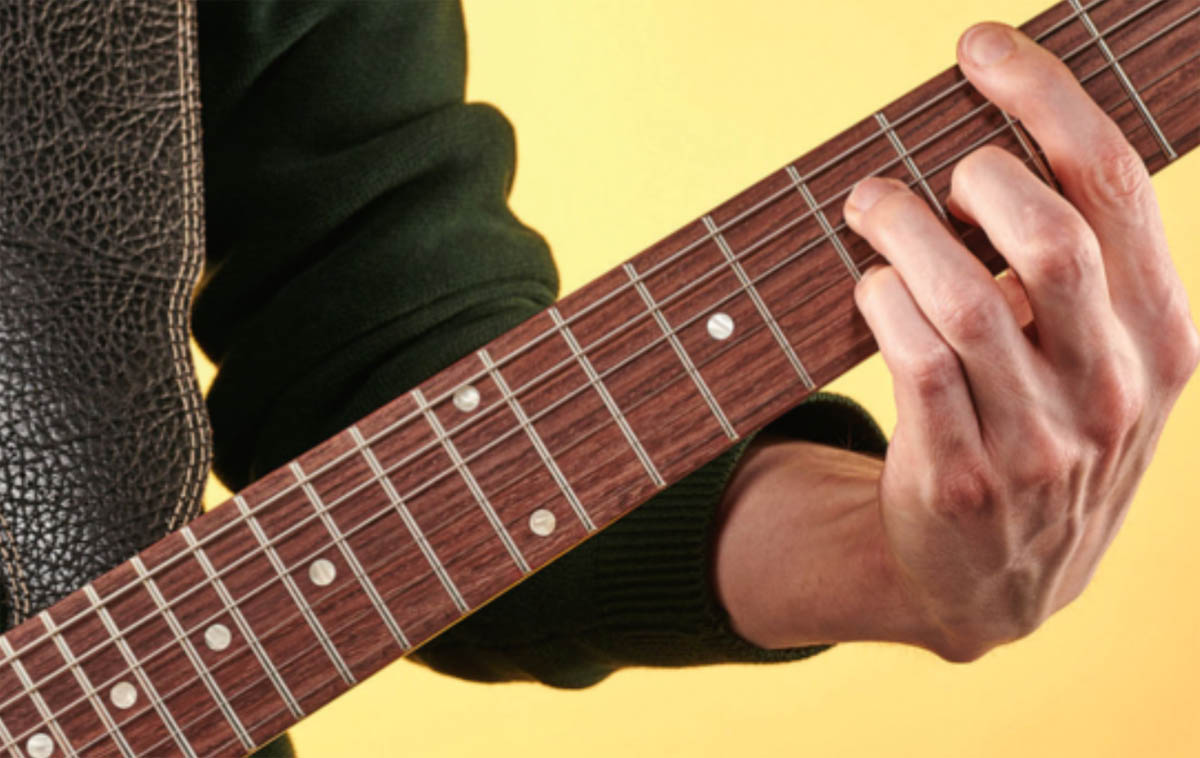
23. D6/9
Strum this with a steady stream of 16ths and you’ll instantly be in Prince territory. As the opening chord from Kiss, this shape is arguably part of the Purple One’s greatest and most memorable guitar moments.
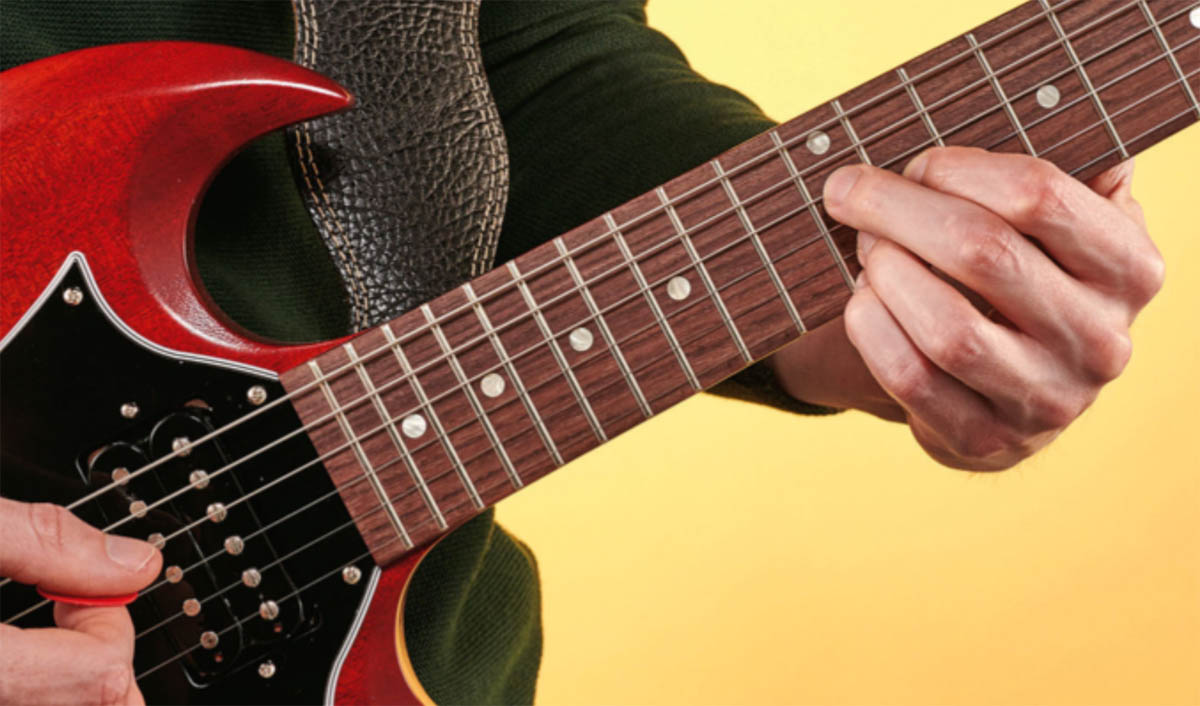
24. Daug
A highly recognisable shape to fans of rock ’n’ roll pioneer Chuck Berry, this shape kicks off the classic No Particular Place To Go. Also try using it in place of a standard D7 shape in a blues progression – the augmented chord has even tension than a dominant 7th.

25. Badd9 (seven-string)
When six strings just isn’t enough you’ve just got to have, er, seven strings, right? Honestly, there’s a world of new shapes to try out if you want to play seven-string guitar and this one covers a full three octaves.
26. F#madd9 (eight-string)
With eight-string guitars now available at under £200, it’d be remiss of us to forget fans of the bottom-end! Just like our seven-string chord, this one covers three octaves. Try and do that on a standard six-string!
27. G/B
Played on its own this chord sounds a bit odd – like an open G with a bit missing perhaps. It comes into its own as a passing chord. Play it in between open C and Am chords and you’ll hear the descending run of notes from C to B and to A. Clever stuff!
28. D/F#
Another shape that sounds great as a passing chord, you can hear D/F# in REM’s Everybody Hurts between the G and Em chords. Instead of a straight change from G to Em you get a smooth sound as the bassline goes via F#.
29. Cdim7
The last of our passing chords, the diminished 7th chord is oft-heard as a chromatic move in jazz and blues. Chromatic? Well, that just means you’ll be moving one fret at a time. For example, Cdim7 might be found between B7 and C#7, or between Bmaj7 and C#m7. B, C, C# are all one fret apart, hence it’s called Chromatic. Simple!

30. EmMaj9
Okay, we admit it, this is a weird-sounding chord with little to no practical use – its jarring, dissonant sound makes it usable for only the most hardened jazzer! Oh, but it is Vic Flick’s signature closing chord from the James Bond theme!

31-40
31. G#m7b5
This is another unusual chord, but it’s worth learning. Despite the tension in its sound it’s a diatonic chord – that means it can be played ‘in key’ with no altered or chromatic notes to worry about. G#m7b5 comes from A major so try using it among other chords from the key, A, Bm, D or E for example.

32. E7#9
Famously known as the Jimi Hendrix shape, the 7#9 chord can be heard in Purple Haze and Foxy Lady amongst many other examples. The rock legend can’t take all the credit though. 7#9s had long been commonplace in post-war jazz and early 20th century classical music.

33. D7#9
More Jimi here as we look at a much less common voicing of his signature chord. It can sound a little muddy thanks to the close harmonies on the bass strings but, hey, it might be the sound you’re looking for. In typical Jimi style, use it in blues-rock and funk jams, and don’t feel like you have to play every string.

34. C/E
Yep, more Hendrix. This is one of the most transferable chords on the guitar. Play a first finger barre across the second, third and fourth strings – your third finger should naturally fall onto some cool embellishments. Little Wing and Bold As Love use this shape across the fretboard.

35. Aadd9
Andy Summers recorded five albums with The Police, yet guitarists will always remember him most for the add9 and sus2 chords he masterminded in Message In A Bottle and Every Breath You Take. Limber up! You’re going to need to stretch those fingers for this tricky shape!

36. E7b9
In music, an altered chord is a voicing where an ‘in key’ note is replaced with an ‘out of key’ chromatic note. In this case the 9th is exchanged for a b9th. It’ll sound great in jazz-blues jams in the style of Robben Ford, Larry Carlton or Scott Henderson.

37. G7#5
Another altered chord, this time the 5th interval is played as a #5th. Try playing a I-IV-V progression in C major (that’s C, F and G chords, folks!) and replace the standard G chord with the altered G7#5 for a slick, jazzy sound.

38. AmMaj9/G#
Coming from the fingers of Led Zeppelin’s guitar legend Jimmy Page, this chord sounds pretty whacky played on its own. However, the shape has foxed many a ‘play by ear’ guitarist – it’s the second chord in the intro to Zep’s epic Stairway To Heaven.

39. C7sus4
You’re probably most familiar with sus chords mixed in around their major and minor brethren – think Queen’s Crazy Little Thing Called Love or Status Quo’s Whatever You Want. However, for a more left-field jazz fusion sound try staying on this sus4 shape without changing to major or minor. Its unsettled sound is great to jam over.

40. Emb6
Okay, ‘horror film’ might be stretching the point but there’s a dark and unsettled vibe to this minor b6th chord. Keep the two bass strings quiet and you’ll have a movable shape that you can play at any pitch on the fretboard.
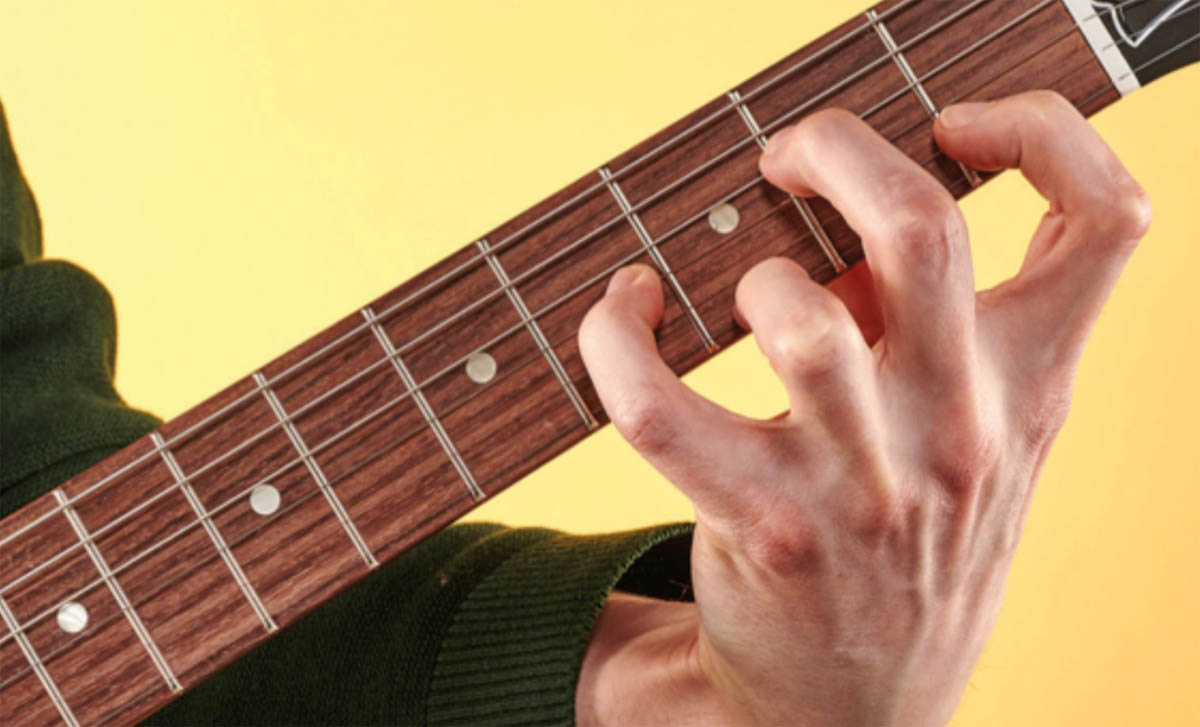
41-50
41. E7
It’s a simple chord, this one – a basic open C7 shape moved up to the 5th position to put it in the key of E. It’s a great blues chord and a staple fingerstyle shape too. Try moving the lowest note to the sixth string to create an alternating bassline.

42. D9
The tension in dominant 9th chords makes this shape a good choice for blues jams and funk grooves. Move your fourth finger to the 7th fret on the first string and you’ll be playing a 13th chord that’s similar to James Brown’s Get On Up.

43. EmAdd9
If you need a dark, moody sound beyond the more basic minor chords, try out a minor add9 like this one. We’re in the open position here in E minor, but it is possible to play it as a barre chord – it’ll be a stretch at the lower frets though so perhaps try it higher up the fretboard first.

44. Dadd9/11
From dark and moody to bright and uplifting, this chord (sometimes written Dadd9add11) sounds rich and lush. The only downside is you can’t play it as a barre chord – the open strings are too far away from the fretted notes. You’ll just have to play in D major more often then!

45. G9sus4
Loosely speaking, this is the much debated opening chord from the Beatles’ A Hard Day’s Night. On the recording the chord is played on a 12-string Rickenbacker, a six-string acoustic and is accompanied by the piano and bass guitar, but our shape will get you as close as one guitar can get.

46. Amaj7
There’s a laid-back, relaxed quality to major 7th chords – whatever music you’re into, it’s a sound you just have to have in your arsenal. This closed position shape can be moved around the fretboard – the gap between the bass and upper notes gives it a clear, focused sound.

47. Ab/Bb
A major chord played over a bass note that’s a tone higher than its root, Ab/Bb (aka Bb11) has a fresh and contemporary sound. Take a listen to Midnight At The Oasis, either Maria Muldaur’s or the Brand New Heavies’ version – this chord rounds off the intro progression.
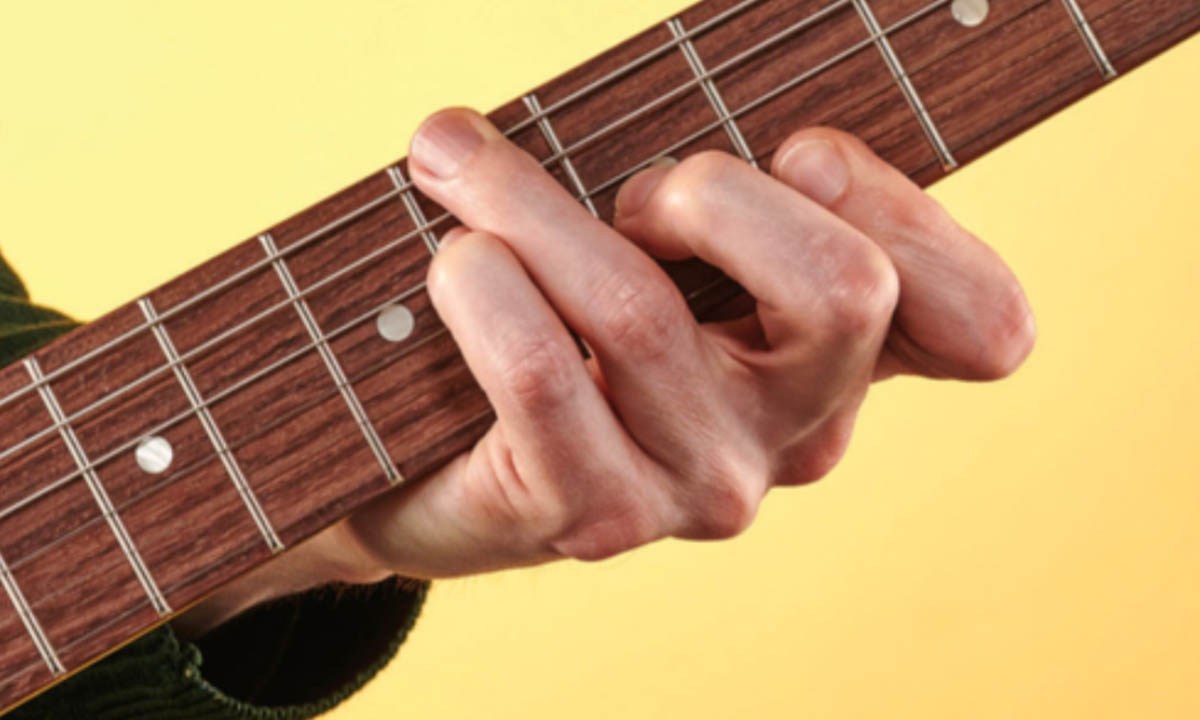
48. Cadd9#11
A wielder of many Lydian modes, it’s obvious that Satch’s signature chord would utilise a #11 – this very interval is at the heart of the Lydian mode after all. This shape is one hell of a stretch though. Ditch the first string note all together and practise farther up the fretboard, we reckon!

49. C/G to F/A
This Keith Richards idea is actually two chords: a first finger barre at the 5th fret (C/G); and a hammer-on with your second and third fingers (F/A), which gives you a stock Stones-style rock ’n’ roll vamp. If you’re in standard tuning play the second, third and fourth strings. If you’re in Keith’s preferred open G tuning you can barre across the top five strings.

50. D6/9
This is a staple chord in both jazz and rockabilly. It also has an uncanny effect of sounding like the end of a song. Seriously, try it! Jam around D7, G7 and A7 chords then finish on D6/9. A perfect, natural ending sound to round off proceedings!

Total Guitar is one of Europe's biggest guitar magazines. With lessons to suit players of all levels, TG's world-class tuition is friendly, accessible and jargon-free, whether you want to brush up on your technique or improve your music theory knowledge. We also talk to the biggest names in the world of guitar – from interviews with all-time greats like Brian May and Eddie Van Halen to our behind the scenes Rig Tour features, we get you up close with the guitarists that matter to you.





